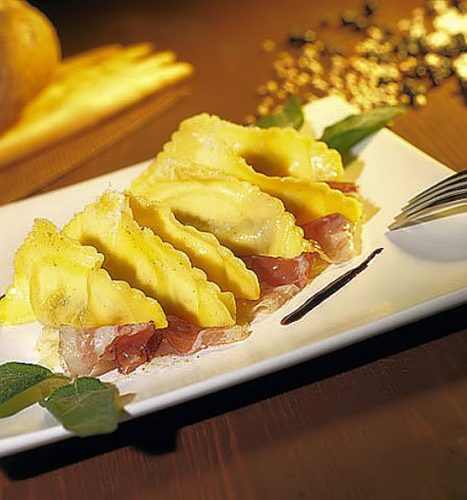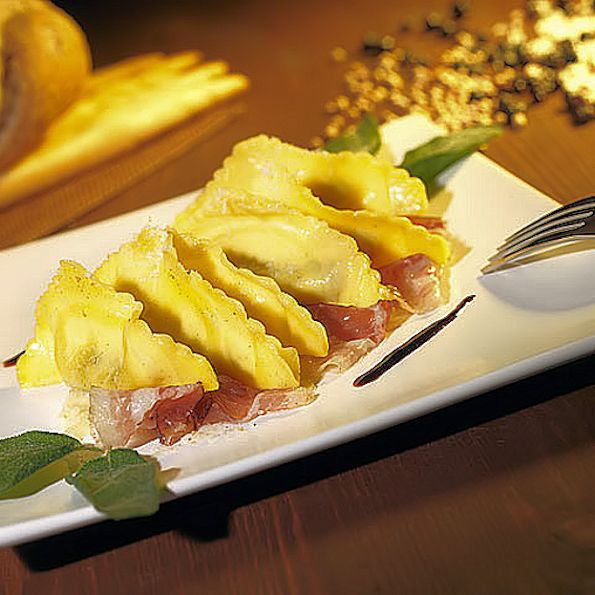
Italian culinary art colleges, questions and answers for Italian hospitality students, a complete summary text about the main topics of this kind of school and the Italian gastronomic culture.
1) What must be the foundamental skills of a good Food and Beverage Manager?
Food and beverage managers plan, organize, direct, control and evaluate the operations of restaurants, bars, cafeterias and other businesses that operate serving food and beverage. These kind of professional workers may be employed by restaurants, bars, hotels and resorts etc. Food and beverage managers still require great customer skills but apply management skills ensuring the labour and financial goals of the organization are maintained.
The most important and foundamental professional skills and competence that a good Food and Beverage Manager should have are: a deep operational knowledge of technical methods and processes of production, service, costs control and revenues; conflict resolution skills, ability to work under pressure and good steel nerves, ability to multi-task operations, good organizational skills, leadership skills, good knowledge of two or three foreign languages, qualities of flexibility and adaptability. In addition to all that he/she must have also strong human qualities and must be a good communicator, a quick decision maker, a motivating staff promoter, a skillful organizer and an expert coordinator.
2) Do you know some typical lombard wines? Can you tell something about them?
The winemaking tradition of Lombardy dates back to its settlement by Greek colonist from Athens along the Po river. The climate of Lombardy is varied due to the diverse terrain of the region but is generally considered a “cool” continental climate and it is very favorable to grapes cultivation. The region is known particularly for its sparkling wines made in Oltrepò Pavese and in the Franciacorta; the importance of this last area is given by the exceptional quality of its wines, mainly the whites of the classic method “Champenoise”: a taste fine and delicate, as well as the flavour make of it a superb sparkling wine, present on the tables of the most celebrated restaurants.
Lombardia also produces still red, white and rosé wines made from a variety of local and international grapes including Nebbiolo wines in the Valtellina region, Trebbiano di Lugana white wines produced with the Chiaretto style rosé along the shores of Lake Garda. The wine region currently has 15 Denominazione di origine controllata (DOC), 3 Denominazione di Origine Controllata e Garantita (DOCG) and 13 Indicazione Geografica Tipica (IGT) designations. The main cities of the region are Milan, Bergamo and Brescia. In this last town province you can find Franciacorta and Botticino areas, or the Garda zone where important and famous wines are produced.
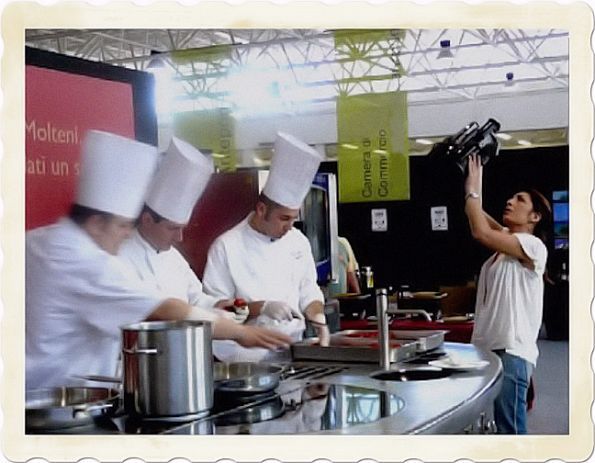
3) What do you know about ethnic and fusion cuisine?
Ethnic is the adjective form of “ethnos” which can be defined as the people of the same race or nationality who share a distinctive culture. An “ethnic restaurant” or “ethnic food” is a lazy way of saying “food from another country I’m not used to eating.” Eventually, if you like the food/restaurant enough and begin to eat it regularly, it sheds the “ethnic” label and you just call it the type of food/restaurant that it is. I never understood why people can’t just call it what it is from the get go. Every dish is ethnic. The so-called “ethnic” restaurants may seem a logical outgrowth of the waves of immigration to the United States and Europe from India, China, South America and Asia in the late nineteenth and early twentieth centuries and the result of faster and faster travel possibilities and world wide globalization. The food served in ethnic restaurants often constitutes a distinct cuisine.
In all cultures and contexts, there are some foods that are almost exclusively eaten in restaurants and others that never are. (For example, one would have to read a great many U.S. restaurant menus before finding those two staples of the American diet, peanut-butter-and-jelly sandwiches and popcorn.) If we consider Indian restaurants in the United Kingdom, we find that by the 1990s, they employed more people (roughly 70,000) than the shipbuilding and steel industries combined. At Ethnique cuisines, we bring you dishes from different ethnicities all over the world. Fusion cuisine combines elements of various culinary traditions while not fitting specifically into any. The term generally refers to the innovations in many contemporary restaurant cuisines since the 1970s. Fusion cuisine blends the culinary traditions of two or more nations to create innovative and sometimes quite interesting dishes. It tends to be more common in culturally diverse and metropolitan areas, where there is a wider audience for such food.
4) How could be composed a typical Lombard Menu?
Lombardy is characterized by a high-quality tourist offer, consisting of lakes, rivers, mountains, cities of art, oenogastronomy, sport and leisure. An area that stretches from the Alps to the Oltrepò and includes the great lakes, large hilly areas and a plain that has been used for agriculture since ancient times can’t help but be an inexhaustible supply of delicious specialities for gourmets. Therefore, it is not by chance that this region has over 250 traditional specialities including cheeses, cold meats, vegetables, cakes and biscuits, without counting the DOC wines which are the pride of whole areas.
There are also many delicious dishes, typical of a culinary tradition that has improved over time, and that today boasts dishes that are famous the whole world over, from “cotoletta alla milanese” (veal cutlets in breadcrumbs) to saffron risotto, from “pizzoccheri della Valtellina” (buckwheat pasta with cheese and vegetables) to “mostarda di frutta cremonese” (fruit pickles from Cremona); from pumpkin tortelli from Mantua to “casonsèi bergamaschi” (a type of homemade pasta), to sweet things such as “torrone cremonese” (nougat from Cremona) to “torta sbrisolona” (a nutty, biscuit type cake) from Mantua, a delight for all those who have a sweet tooth. Therefore a typical menu could be: Rosettes of bresaola (cured raw beef), Risotto at the Milanese, Agnolotti with Bitto cheese and porcini mushroom sauce, Perch with sage, Veal chops in sauce, Potato croquettes, stewed peas, Stuffed apples. In this region we can also have a wide selection of wines such as Valcalepio white wine; Franciacorta red ; Lugana white or San Colombano red ; Oltrepo Pavese and sweet Muscat.
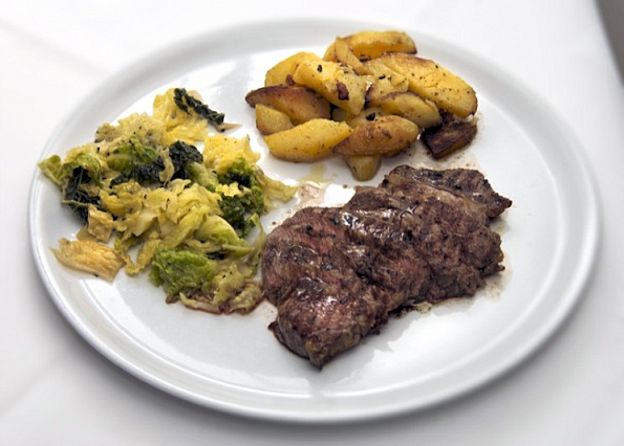
5) What do you know about Fast Food and Takeaway restaurants?
Fast food also known as Quick Service Restaurant or QSR within the industry itself, is the term given to food that can be prepared and served very quickly. While any meal with low preparation time can be considered to be fast food, typically the term refers to food sold in a restaurant or store with low quality preparation, preheated or precooked ingredients, and served to the customer in a packaged form for take-out/take-away. The term “fast food” was recognized in a dictionary by Merriam–Webster in 1951. Precooked foods such as french fries or pizza typically must be used within a few hours, or they become dried out and unpalatable. The restaurant must balance availability with the expected numbers of customers, to avoid discarding unused expired product.
Similarly, the food itself is often intended to be consumed quickly, using strong contrasts such dry corn chips with greasy or wet toppings that will combine into a gooey mess if stored for later consumption. Outlets may be stands or kiosks, which may provide no shelter or seating, or fast food restaurants (also known as quick service restaurants). Franchise operations which are part of restaurant chains have standardized foodstuffs shipped to each restaurant from central locations. The capital requirements involved in opening up a fast food restaurant are relatively low. Restaurants with much higher sit-in ratios, where customers tend to sit and have their orders brought to them in a seemingly more upscale atmosphere, may be known in some areas as fast casual restaurants.
In areas which had access to coastal or tidal waters, ‘fast food’ would frequently include local shellfish or seafood, such as oysters or, as in London, eels. Often this seafood would be cooked directly on the quay or close by. The development of trawler fishing in the mid nineteenth century would lead to the development of a British favourite fish and chips partly due to such activities. British fast food had considerable regional variation. Sometimes the regionality of dish became part of the culture of its respective area. The content of fast food pies has varied, with poultry (such as chickens) or wildfowl commonly being used. After World War II, turkey has been used more frequently in fast food. A particularly British form of fast food is the sandwich, popularised by John Montagu, the fourth Earl of Sandwich in 1762 when he wrapped dried meat in bread so as not to interrupt his work or his gambling (accounts vary).
6) What do you know about August Escoffier and why is he so world wide known?
Georges Auguste Escoffier (28 October 1846 – 12 February 1935) was a French chef, restaurateur and culinary writer who popularized and updated traditional French cooking methods. He is a legendary figure among chefs and gourmets, and was one of the most important leaders in the development of modern French cuisine. Much of Escoffier’s technique was based on that of Antoine Carême, one of the codifiers of French haute cuisine, but Escoffier’s achievement was to simplify and modernize Carême’s elaborate and ornate style. Referred to by the French press as roi des cuisiniers et cuisinier des rois (“king of chefs and chef of kings”), Escoffier was France’s pre-eminent chef in the early part of the 20th century. Escoffier’s greatest innovations were in menu planning.
For hundreds of years, doinners had been served in the style called à la francaise, with a large number of different dishes set out on the table at once. Service à la Russe is the practice we know today of serving dishes consequently rather than simultaneously. Alongside the recipes he recorded and invented, another of Escoffier’s contributions to cooking was to elevate it to the status of a respected profession by introducing organized discipline to his kitchens. He organized his kitchens by the brigade de cuisine system, with each section run by a chef de partie. Escoffier’s reorganization into parties, each dependent on the pothers, made the work in the kitchen co-ordinated and well controlled. Escoffier published Le Guide Culinaire, which is still used as a major reference work, both in the form of a cookbook and a textbook on cooking. Escoffier’s recipes, techniques and approaches to kitchen management remain highly influential today, and have been adopted by chefs and restaurants not only in France, but also throughout the world.
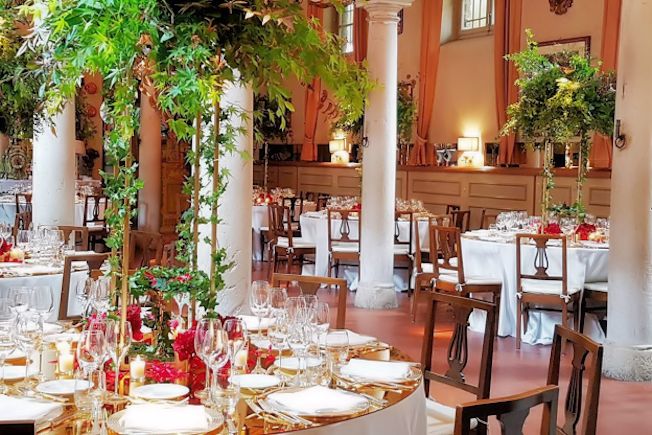
7) What do you know about Pellegrino Artusi and why is he so world wide known?
Pellegrino Artusi (1820–1911) was the author of the famous Italian cookbook “The Science of Cooking and the Art of Eating Well. Artusi was born in Forlimpopoli, a town near Forlì, and made his fortune as a silk merchant, but after retiring devoted himself to fine dining. In 1891, at age 71, he completed his famous cookbook, but could not find a publisher. So he used his own money to self-publish, selling a thousand copies of the first edition in four years. Soon, however, the cookbook caught on, and before Artusi died in Florence in 1911, more than 200,000 copies had been sold. Filled with amusing anecdotes as well as recipes, the book is a perennial best seller in Italy, and has been translated in Spanish, Dutch, German and English.
In 1904 Artusi published a practical manual for the kitchen, with over 3,000 recipes and 150 tables, simply entitled “Here is your cookbook” with the anonymous participation and influence of the baroness Giulia Turco. Writing only two decades after the unification of Italy, Artusi was the first to include recipes from all the different regions of Italy in a single cookbook. He is often credited with establishing a truly national Italian cuisine for the first time. Still today his main literary work counts a great number of editions and widespread diffusion. It collects 790 receipts, from broth to liqueurs, passing through soups, hors-d’ouvres (or well beginners), second dishes and cakes. The approach is a didactic one, the receipts are followed by the author’s reflections and anecdotes, as he writes in az witty style. The kitchen science and the art of well eating was a real boundary line in the gastronomic culture of the age.
8) What is a kitchen brigade and where can we find it?
Late in the 19 th Century, the ingenious chef Georges Auguste Escoffier (1846-1935) created the modern brigade system while working in London at the Savoy Hotel, even though evidence of brigade-style culinary arrangements can be found in late medieval French and English sources. For getting the utmost efficiency, he organized the kitchen as a strict hierarchical ladder of authorities and functions. This structured team system delegates responsibilities to different individuals that specialize in certain tasks.
At the top of this ladder we find the Head Chef (Chef de cuisine) who coordinates and supervises the kitchen activities, establishes the standards, works out the prices on the menu and so on. He also directs the trainees on work experience. The size of the kitchen brigade usually depends on the type of restaurant and the food that is served. Due to the high costs involved in employing a large staff, many food establishments now expect much more flexibility from a smaller kitchen brigade. Another factor in kitchen staff reduction is the dramatic impact that technology and standardisation have had on the industry process. In any case luxury hotels and first-class restaurants around the globe still employ large brigades because they must provide efficiency and personalised service which are necessary for the standards of their clientele.
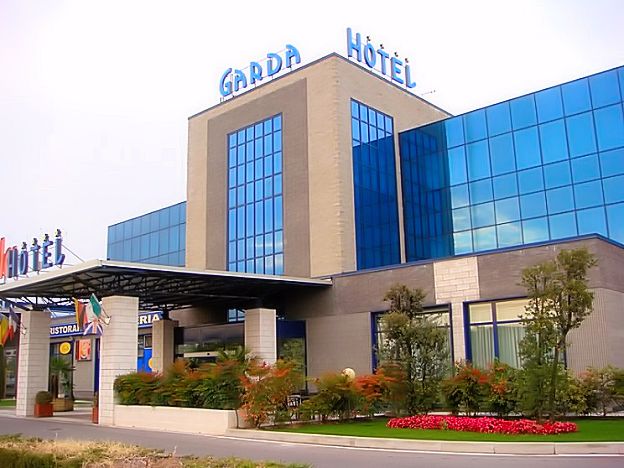
9) What are the main roles of a head chef and the duties of an under chef?
The Kitchen chef (Chef de cuisine) is responsible for overall management of kitchen. He supervise staff, create menus and new recipes with the assistance of the restaurant manager, make purchases of raw food items, train apprentices and maintain a sanitary and hygienic environment for the preparation of food. He must have the ability to organise duties and solve any problems that may arise in kitchen daily operations. He is not just a cook, but he is a head cook, which implies a higher level of prestige. Depending on the skill, training and perserverance, a chef can climb the ranks and gain more prestige and responsability. many famous chefs have planned their own progress and worked in some of the most notorious restaurants under some of the most renowned chefs in the world until they, too, became skilled and well-known.
The Head chef is assisted by an under chef (sous-chef de cuisine), who supervises how the food is prepared, portioned and arranged according to the head chef’s directions. The Deputy kitchen chef receives orders directly from the chef de cuisine for the management of the kitchen and often represents the chef de cuisine when he or she is not present.Subordinate are the section chefs (chefs de partie); each one is in charge of the preparation of particular food and dishes. All this staff makes up the kitchen brigade, of course the number of the section chefs depends on the size and the class of the restaurant as well as the number of assistants.
10) What does the acronym HACCP mean and what it is used for?
HACCP is the acronym of Hazard Analysis and Critical Control Point which is a systematic preventive approach to food safety and pharmaceutical safety that addresses physical, chemical, and biological hazards as a means of prevention rather than finished product inspection. HACCP is used in the food industry to identify potential food safety hazards, so that key actions, known as Critical Control Points (CCPs) can be taken to reduce or eliminate the risk of the hazards being realized. The system is used at all stages of food production and preparation processes including packaging, distribution, etc.
A critical control point means a point, step or procedure in a food process at which a control measure can be applied, and at which control is essential, to prevent, reduce or eliminate and identified food hazard. This method was applied for the first time in the USA in 1971 by the NASA when the Pillsbury firm accepted to make the food for astronauts and wanted to produce it being very careful with the maximun precautions, in order to assure the safety of the food and the astronauts themselves. This method is nowadays applied everywhere since customer health safety is extremely important, and therefore proper hygiene in the food and beverage industry must be treated with the utmost respect and attention.
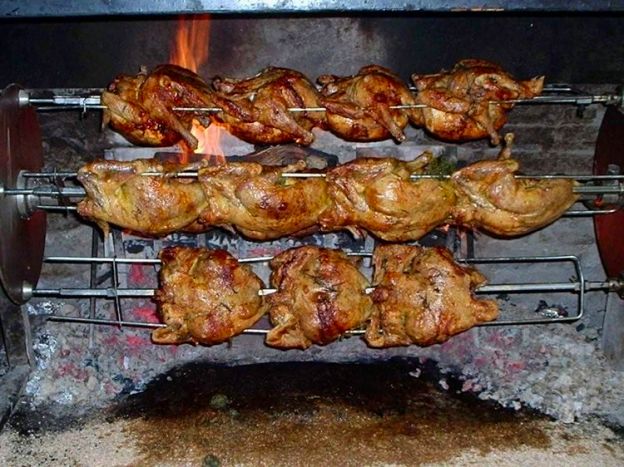
11) What are the seven steps to develop a HACCP plan?
In order to develop a good and healthily prevention system in the food processing industry an accurate HACCP plan must be elaborated and written; this document delineates all the procedures to be followed during food preparation in every kitchen. Once the plan has been prepared, it is necessary to validate and verify that the plan works after it is implemented. there are seven principles which are used to develop and implement a HACCP plan. These seven parts are: 1. Analyse Hazards. Everyone who works in the catering industry must be aware of the hazards associated with food and drinks. Hazards can be biological (i.e. microbe), chemical (i.e. pesticides) or physical (i.e. metal fragment) 2. Identify Critical Control Point.
These are the stages, or points, in the food production process where hazards should be controlled or eliminated. 3.Establish Preventive Measures with critical limits for each control point. This should be for any cooked food. (i.e. determining the minimun cooking temperature). 4. Establish Procedures. To monitor the critical control points. This could include deciding how cooking time and temperature should be supervised and who is responsible. 5. Establish Corrective Actions. To be taken when monitoring which shows that a critical limit has not been met. 6. Establish Procedures. To verify the system is working properly. 7. Establish an Effective System. In order to record information to document HACCP system.
12) Can you classify what are the main types of restaurants, with their food, clients and price range?
Restaurants are classified on the kind of food, type of clients and price range. Therefore wowadays we can have all the different range of food establishments, since in the 20th Century with the development of commerce, business, technolgy and a huge immigration flow, we can have a large variety of offers, of dishes, of menus and of culinary different traditions. We can have: Fast-Food Restaurants, Coffe Shops and Self-Service Restaurants, here the price range is inexpensive and the customers are mainly clerks, students, teachers, families and so on, the food is often precooked or prepared in advance, here you can find soups, pasta, metas, vegetables, desserts, or pizza, hamburgers, french fries, soft drinks, sandwiches, hot and cold drinks, ice cream, snack items, and so on.
Then we can have Hotel Restaurant in which the food, the price and the clients are based on the hotel category, or Ethnic Restaurant where you can find international food such as Chinese, Mexican, Brazilian, Indian, all different kinds of clients and the price range varies from inexpensive to average, finally we can have Speciality Restaurant and Gourmet Restaurant, here you can find speciality cuisine or top quality and elaborate dishes, you can also find all types of clients, from families to VIPs, business clients, celebrities, conference delegates, wealthy people etc. and also the prices varies, from average to expensive and very expensive.
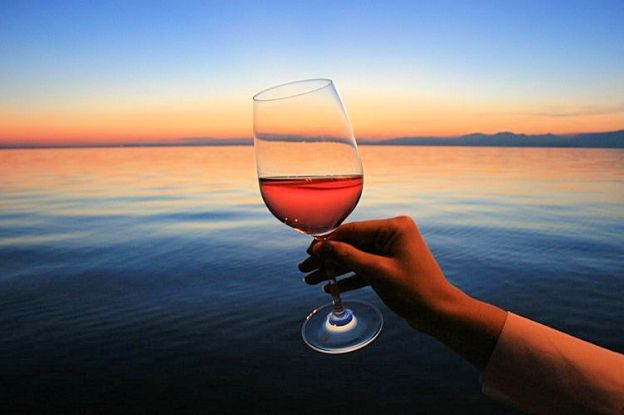
13) What is the origin of the term “Menu”, what are the main types of menus and what features should a good menu have?
The word menu, like much of the terminology of cuisine, is French in origin. It ultimately derives from Latin minutus, something made small; in French it came to be applied to a detailed list or résumé of any kind. So originally menus were just list of food that could be raw or cooked, then in 19th Century individual menus were introduced and the food was divide into courses. Nowadays in restaurants, a menu is a printed brochure or public display on a poster or chalkboard that shows the list of options for a diner to select. A menu may be a la carte -in which guests choose from a list of options – or table d’hôte or carte du jour, in which case a pre-established sequence of courses is served, then nowadays we can have coffee shop menus. In the 2000s, many fast food restaurants switched to digital menus which are displayed on flat-screen LCD televisions. Depending on the restaurant, the menu may display a list of wines and their prices, or this information may be available in a separate brochure called the wine list.
Some restaurants may also have separate menus for beer, liquor, and mixed drinks, and for desserts. A good menu should be planned considering a lot of different steps, such as: analyse the potential customer, location of the establishment, the price and cost of food, the staff skill and size, availability of food and reliability of suppliers, time of the year, festivity days, time of the day, number and sequences of courses, nutritional value, last but not least the language. The numbers of courses and the number of dishes may vary depending on the size and type of restaurant, but you must always remember that a menu often influences the customer, so when designing menus, chefs and restaurateurs have to try to appeal to certain marketr segments and they must also create the right atmosphere of the restaurant with decor, furniture and uniforms.
14) Can you explain what is a function and what are the main steps you must follow to organize it well?
A function can be described as the service of food and drink at a specific time and place, for a given number of people at a known price. We can have social functions, such as weddings, anniversaries, dinner dances, seminars; then we can have Business functions, such as conferences, meetings, working lunches, working dinners or finally we can have Social and Business functions such as corporate entertaining. Sometimes these functions are also called banquets, even if this term is used to describe a large formal occasion. The variety of functions events ranges from simply providing bar facilities in a conference reception area before or during the meeting, to the more formal occasion catering for up to one or two thousand people. Function catering is found in the commercial and public sector of the Hospitality Industry. Policy decisions are determined by a number of features concerning type of catering. A caterer usually gets information of the function in advance. This includes: number of guests; price per couvert; menu requirements; drink required; type of menu.
This information allows the manager to assess the resource requirements, for example: staffing, linen, food and drink, equipment. As a consequence the manager can assess the profit margins to be achieved. Marketing considerations must also be taken into account, in fact the function manager should be aware of the competing companies working in the same area and he should have information of other establishments in order to differentiate the offer. The relationship between price and value for money is an important aspect of pricing. Value for money refers not only to the food but to many other factors such as the atmosphere, décor and the level of service and so on. The function manager must plan every aspect, such as the timing of the function, the room layouts, the staff organization, the choice of menu (vegetarian or allergy requirements), types of service, flowers and centrepieces, cloakroom requirements, techinal requirements and so on.
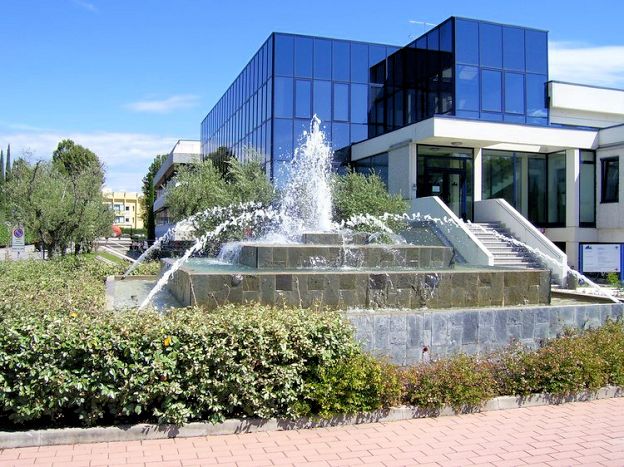
15) What do you know about “function catering” and more precisely about organizing Buffets and Banquets?
The terms “buffets” and “banquets” can be summed up with the term “Function catering”. This refers to the request for the supply of food and beverage to people celebrating special events, such as wedding receptions, cocktail parties, business congresses and meetings, stag parties, hen parties and so on. The type of meal chosen largely depends on the degree of formality required, even if the success of a good banquet or buffet mainly relies on the impeccable organization and attention to every detail (floral table pieces, decorations, elegant clothing, china, silverware, glassware). Nowadays in large establishments, provided with banqueting suites or banqueting halls, there is a permanent staff exclusively in charge of the organization of function catering.
The trend is certainly towards buffets rather than endless formal sit down meals and this function is ideal for large number of guests. The customers either help themselves or are served by waiters standing behind the buffet table. What’s more clients prefer to devote less time to eating and leave more time to entertainment. Light and balanced menus, three courses instead of five, are therefore naturally preceded by an aperitif and a buffet. The arrangement of a buffet must be so to highlight all the different food items, and before anything else it has to attract the guests’ attention fo its beauty. The cold buffet can be considered, without any doubt, a new and modern form of catering, it replaces the large meals of the past and allows the tasting of many food specialities.
The food items in a cold buffet can be endless, we can have assorted hot appetisers (savoury patties, or small pizzas, etc), sea food (cold lobster, shrimp cocktails, scampi mousse), fresh water and sea fish, cold beef, veal and pork, mixed salads, desserts, patisserie, fruts, etc. As for the drinks, the service starts with the aperitifs then the white wine is served, both dry and sweet, and high quality red wines, followed by sparkling wines or champagne, then ending with coffee, whiskey or any other suitable cocktail. Among function catering we can have: cocktail buffet, brunch, slunch, the buffet lunch that can also offers hot dishes, the country buffet that can offer country products and the dinner buffet that offers also hot dishes. (pizzas, scones, turnovers, puff, pies, quiches, or cream guns, fresh fruit tatelettes, donuts, cream beignet, etc).
16) What do you know about the Victorian Period and its innovations?
The Victorian era represented the height of the Industrial Revolution, a period of significant social, economic, and technological progress in the United Kingdom where the theories of Jeremy Bentham, Carl Mark and Charles Darwin were spreading about. Victoria’s reign was marked by a great expansion of the British Empire; during this period it reached its zenith, becoming the foremost global power of the time. During the reign of Queen Victoria Britain emerged as the most powerful trading nation in the world, provoking a social and economic revolution whose effects are still being felt today. Since the latter part of the eighteenth century the process of industrialisation had built a firm foundation for nineteenth century growth and expansion.
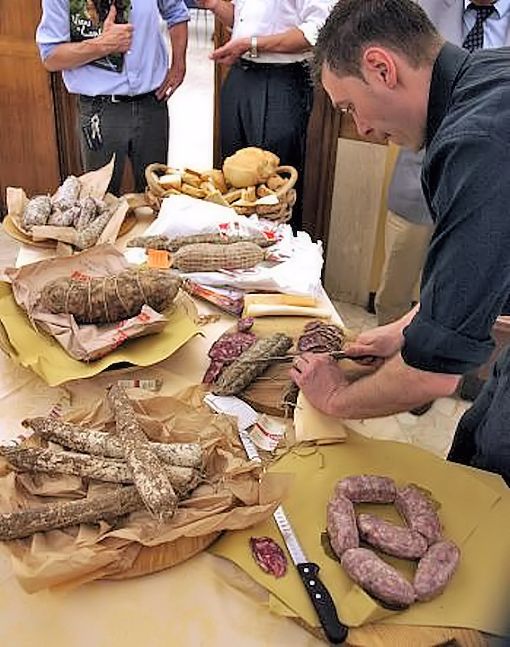
At the heart of this was the successful development and application of steam technology. Like the steamship, the railway predates the Victorian era. By 1845 2441 miles of railway were open and 30 million passengers were being carried. The building of the railway network was the major achievement of the Victorian period, changing for ever both social patterns and the landscape of Britain. Other useful inventions of this period were the Telephone, the Radio, the Refrigerator, the Toilet, the Camera, the Sewing Machine, the Stamps and the Vacuum Cleaner. There were also significant improvements for food preservation and the first “canned food” like dried soups and chemicals appeared. (Pasteur’s theories).
17) What was a typical Victorian Menu?
During Victorian times the diet of most people began to improve: the invention of steam ship and of refrigeration meant that meat, fish and fruit could be imported! People could begin to eat shellfish, poultry, game, cheeses but also exotic fruit (peaches, pineapples, etc.). The cooks were especially prized for their dessert-making skills-puddings, cakes, etc.
The Victorian period was an epoch of compromise: progress and poverty; corruption and moralism. For the Victorian Upper-classes the woman planned lunch and evening meals (the largest one). She had a cook that did the work for her. They ate 5-6 courses when they were alone; 12-13 when there were guests. “Supper” was the Victorian mid-night snack.
The Afternoon tea served to show off the lady’s finest silver, china and linen. A typical Victorian Menu was composed by Soup, Roast Turkey with dressing or Roast Pork with potatoes or Chicken Fricassee served with rice, Two vegetable side dishes, Citrus ice, Jam, jellies and sweet pickles, and to end Cake and preserved fruit with Coffee, hot punch and water. Wine was served at the end of each course. Madeira and sherry after. Breakfast could be done with scones, fruits, omelettes, bacon and more.
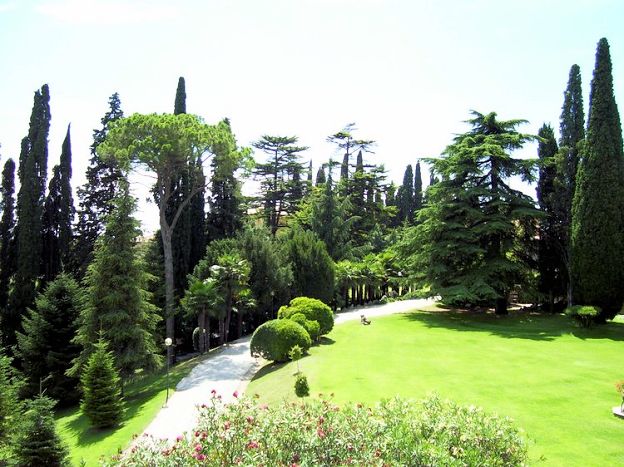
18) What are your favorite Italian and Lombardy recipes?
ASPARAGUS RICE (Risotto agli asparagi)
INGREDIENTS:
2 cups Italian rice (Risotto Arborio)
1/2 cup salted butter, or 1/4 cup olive oil
2 Tablespoon dried parsley
1 whole red onion (chopped)
5?6 cups chicken stock
20 asparagus spears
1/4 cup olive oil
3 cloves garlic (minced)
8 Tablespoon parmigiano cheese (grated)
PREPARATION METHOD:
Rice Preparation: In a sauce pan, melt butter or add 1/4 cup olive oil. Add onions and parsley. Cook until onion is transparent.
Turn heat to high, add rice. Add 3 ladles of hot chicken stock into rice, stir constantly until liquid is absorbed. Continue adding stock (3 ladles at
a time) and stir until rice is tender. Rice should be sticky and no liquid should remain. Rice should be firm like putting or custard. Put rice aside.
Asparagus Preparation: In a fry pan, add 1/4 cup olive oil and garlic. Cook until garlic is golden. Cut asparagus into 1 inch diagonal pieces, leave 5?6 spears uncut, will be used for garnish. On medium/high setting, cook asparagus (both cut & whole) uncovered for 3 minutes. Add 1/4 cup chicken stock, salt & pepper to taste.
Continue cooking covered until tender. Final Preparation: Add asparagus to rice. Place back on stove, add the cheese and stir. Add more cheese if desired.
Place rice on a serving dish and garnish with whole cooked asparagus spears.
GRILL POACHED WHITEFISH (Coregone-Lavarello- grigliato al cartoccio)
INGREDIENTS:
2 lbs. boned whitefish fillets
1 med. onion
1 med. lemon
salt
pepper
butter
PREPARATION METHOD:
Sprinkle both sides of fillets generously with butter buds. Lay fillets singly on individual sheets of aluminum foil. Cover with onion rings and salt and pepper to taste. Cover onion rings with several full slices of lemon, peel included. Wrap in foil and place on charcoal grill or in broiler oven for 5-6 minutes on each side. Discard cooked lemon slices when foil opened. Decorate plate with fresh lemon slices and fresh parsley.
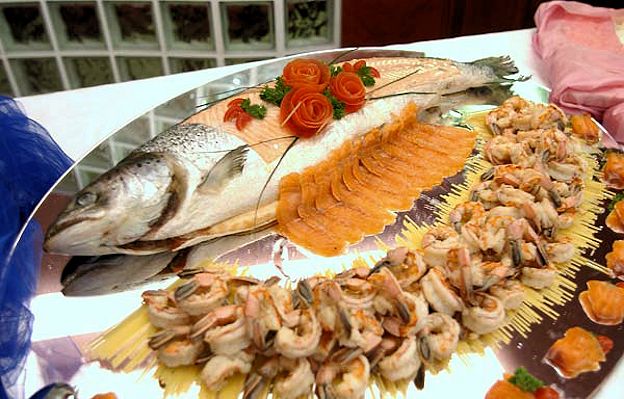
GRILLED WHITEFISH WITH SAUCE (Coregone-Lavarello- grigliato con salsa)
PREP: 5 min, Cook: 10 min.
INGREDIENTS:
1/3 cup mayonnaise type salad dressing
1 Tbs. sweet pickle relish
1/4 cup unsalted butter, melted
1 tsp. lemon juice
4 whitefish fillets, or haddock or orange roughy fillets, about 6 ounces each
PREPARATION METHOD:
Prepare grill (medium heat). Combine first 3 ingredients in a bowl and mix well. Set aside. Combine butter and lemon juice in a separate bowl. Mix well. Arrange fish on grill and brush with butter mixture. Grill fish 5 inches from heat source 6-8 minutes, or until fish flakes with a fork, turning once and brushing occasionally with butter mixture. Serve with sauce.
You can also read:
Italian Cooking Recipes
Cooking traditions in Brescia
Tourism Resources Page
Job Opportunities in Tourism
Best restaurants in Italy
Enogastronomia in Italia

